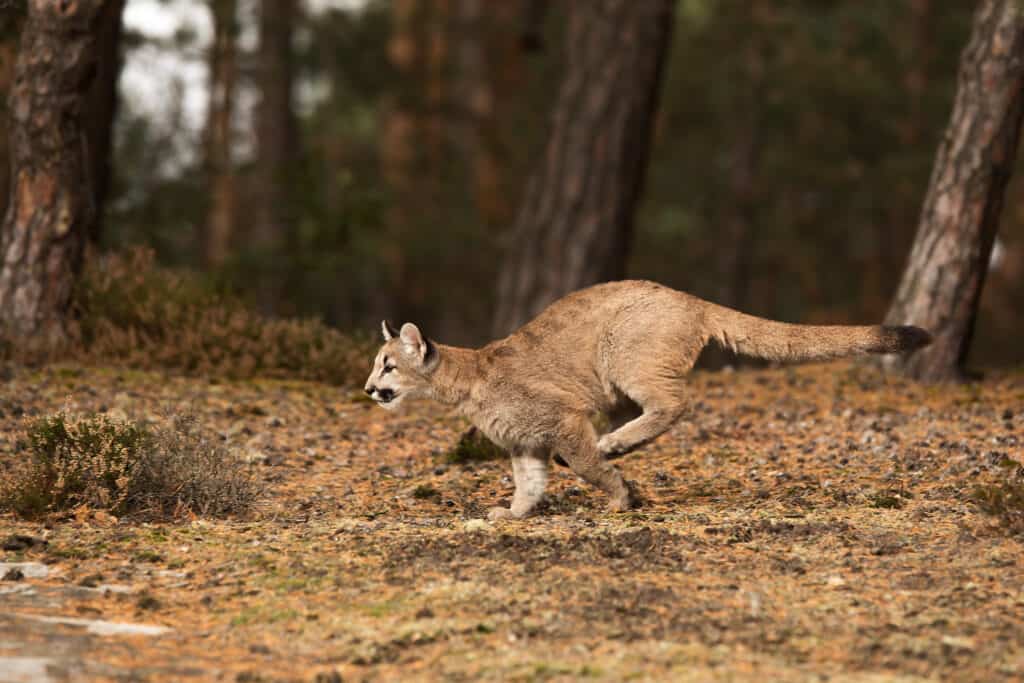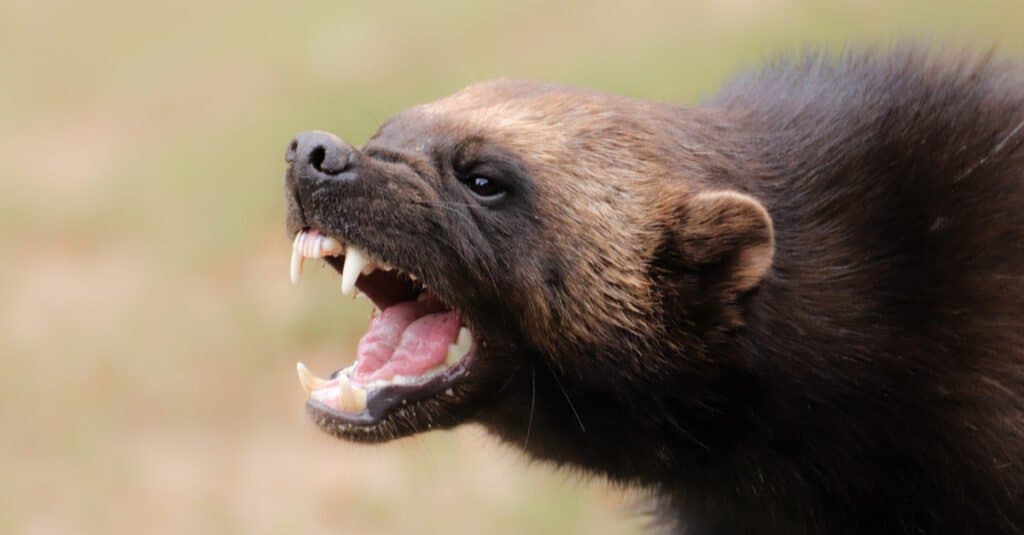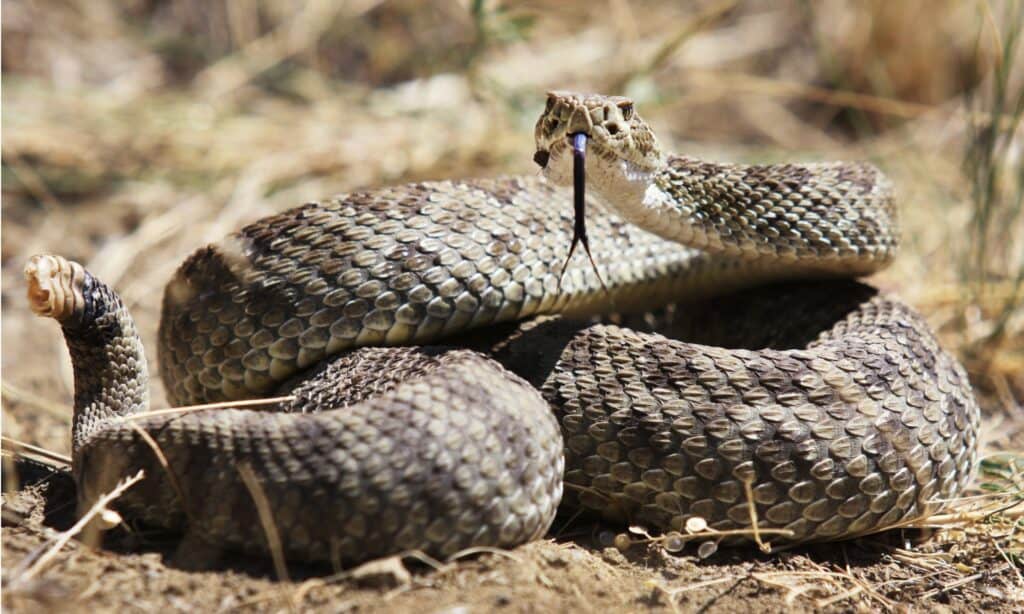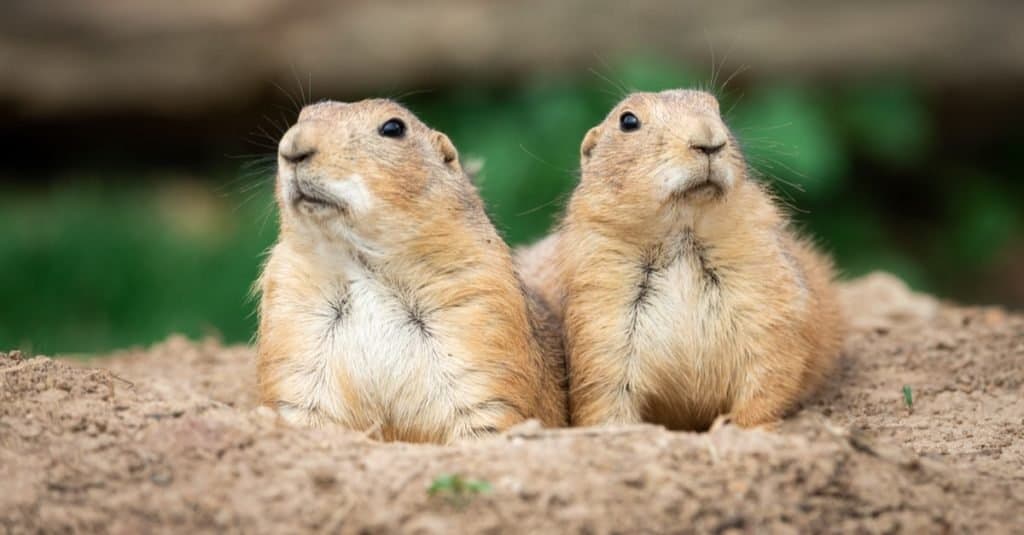Montana is a vast state along the northeast border of the US with Canada. Not heavily populated, there is plenty of diversity in animals and wildlife. Did you know there is an island in one of the parks? It’s home to bears, bighorn sheep and wild horses. So what are the deadliest animals in Montana?
Glacier National Park is known for its bears, but it also has mountain lions, wolves, and even wolverines.
These all sound like dangerous animals! Are there any poisonous or venomous animals in Montana?
There sure are. Let’s dive into the deadliest animals in Montana.
How Dangerous are Grizzly Bears?

Grizzly bears are large animals with an incredible bite force.
©Perpis/Shutterstock.com
The state animal of Montana is the Grizzly bear, and Montana has the largest concentration of Grizzlies in the lower 48 states. Alaska has the largest population of these massive bears. Grizzlies are larger and more aggressive than black bears, which can also be found in the state. Black bears weigh, on average, 400 lbs but can get up to 650 lbs. Grizzlies usually start at 700 lbs and can be as much as 1,500 lbs or more.
Because grizzly bears were overhunted, they are federally listed as threatened. It is unlikely to encounter a bear unless you are in the backcountry, but attacks do happen. In August 2021, two hikers came across a bear in Montana just North of Yellowstone National Park.
They were hiking with their dog when they crossed paths with a mother bear and her cubs. We know how protective mother bears can be. The hikers were prepared and used bear spray to fend off the bear. Park officials said there is an increase in the number of bear/human incidents this past year, but it is still highly unlikely to be attacked by a bear.
Deadliest Animals in Montana: Mountain Lions and Wolves

Oregon hosts 6000+ mountain lions.
©Michal Ninger/Shutterstock.com
Glacier National Park has both mountain lions and wolves. Their website provides safety guidelines for hiking where these animals are found. Mountain lions can be 7 feet long, including their tail and weigh more than a large dog, between 130-150 lbs. It is generally advised not to hike alone, to make noise while hiking, so you don’t startle animals, and to keep children close by. If you do encounter one, back away slowly, do not run!
According to the Montana Fish, Wildlife and Parks, there were around 1,100 wolves in Montana in 2019. Wolves are carefully managed to maintain a balance in the ecosystem. Wolves hunt in packs and can work together to bring down large prey like bison, but they do not hunt people and rarely attack, with only 2 recorded fatalities in the last hundred years in the US.
What About Wolverines?

Wolverines are ferocious predators believed to kill prey much larger than themselves.
©DenisaPro/Shutterstock.com
The mascot for the University of Michigan is the wolverine, but ironically there are no Wolverines in Michigan. They got the nickname from a dispute over land ownership with Ohio, and the Ohioans called them wolverines because of their ornery disposition. There are wolverines in Montana; in fact, the largest population is in the state.
Wolverines look like small bears with short legs and longer furry tails. They are 2-3 feet long and can weigh between 20-60lbs. Wolverines are known for their tempers! They are also similar to skunks as they can use their anal glands to make a foul-smelling odor. Who wants to invite an angry, smelly animal to their party? They sound mean, but are they a threat to people? Not really. They are solitary animals who avoid interactions with humans.
Are there any poisonous or venomous animals in Montana?

Prairie rattlesnakes are also called western rattlesnakes.
©iStock.com/HRossD
- Prairie rattlesnake: The only venomous snake in Montana is the prairie rattlesnake, which is a big snake, with some reaching 4 feet long. Even if you did encounter a rattlesnake, the chances of being bitten or dying are extremely rare. In the past 10 years, there have been zero fatalities from snake bites in Montana, and there are only 16 bites per year on average.
- Black Widow Spider: If you were looking at the deadliest animals, the black widow may come in first place. The females are known to devour their male counterparts after mating…yikes! But they do not prey on humans and prefer to be left alone. They are venomous, so if you get bit, it is better to seek medical attention than wait to see if you will have an allergic reaction.
- Northern Scorpion: When you think about scorpions, you probably think about the southern states and a scorpion scooting across the desert. The Northern scorpion can hibernate and go months without food. A sting from a Northern scorpion is painful but rarely fatal. Seek medical attention if you have any adverse symptoms.
Deadliest Animals in Montana: Deers
All the animals we’ve mentioned clearly have some dangerous features. So why are cute Bambi-like deer even mentioned? Montana ranks 2nd for collisions with a deer in your vehicle. There are an average of 17,000 deer-vehicle collisions per year in Montana, according to State Farm Insurance. To avoid a deer accident, it is important to be alert during sunset and watch for multiple deer since they usually move in groups.
Are Prairie Dogs Just Cute, Or Can They Be Dangerous?

Two Prairie dogs in a meadow. Their vocabulary is more advanced than any other animal language that’s been decoded.
©AB Photographie/Shutterstock.com
Can you imagine a 98-acre prairie dog haven? That’s what Greycliff Prairie Dog Town State Park is. You can observe the prairie dogs that live, work together, and keep each other safe. The prairie dog park protects the black-tailed prairie dog providing a safe place for them to thrive. According to the park officials, “These creatures have great ecological significance because they create patches of habitat that provide prey, shelter, and forage for a diverse number of animals, including burrowing owls, black-footed ferrets, and mountain plovers.”
Prairie dogs look like large guinea pigs, so are they dangerous in any way? World Wildlife Fund correspondent Jessica Alexander has had first-person experience with prairie dogs and reports, “The worst animal bite I’ve ever gotten was from a prairie dog,” so they can pack a powerful bite. Still, it is extremely unlikely that the average visitor to the park would be at risk since visitors are encouraged to observe and take pictures but keep their distance!
Up Next
The photo featured at the top of this post is © PhotoBarmaley/Shutterstock.com
Thank you for reading! Have some feedback for us? Contact the AZ Animals editorial team.






